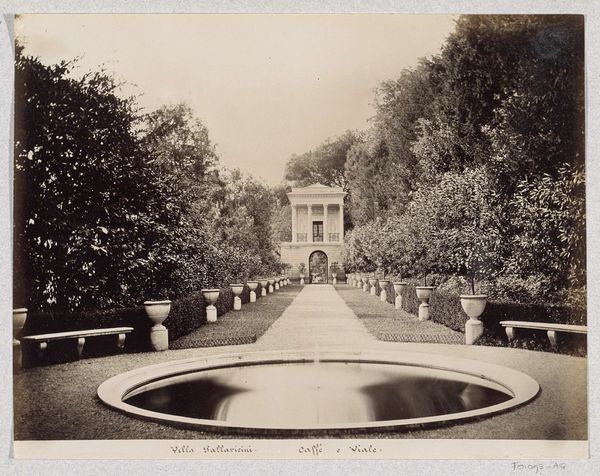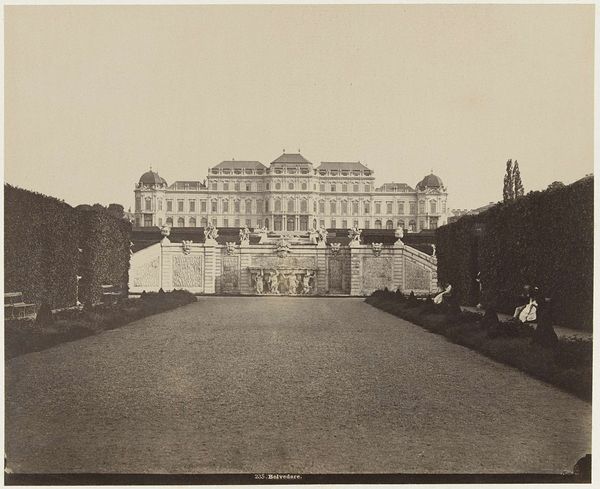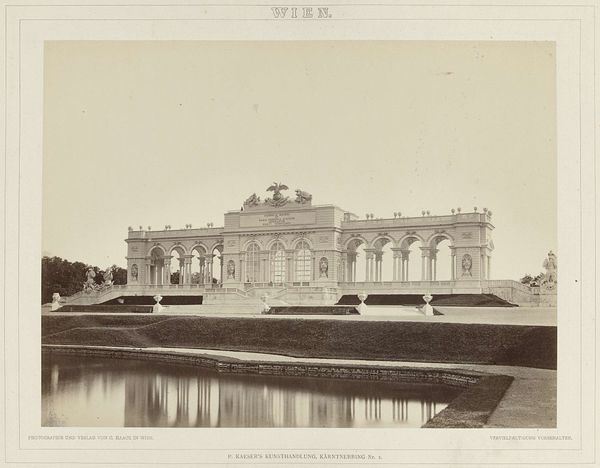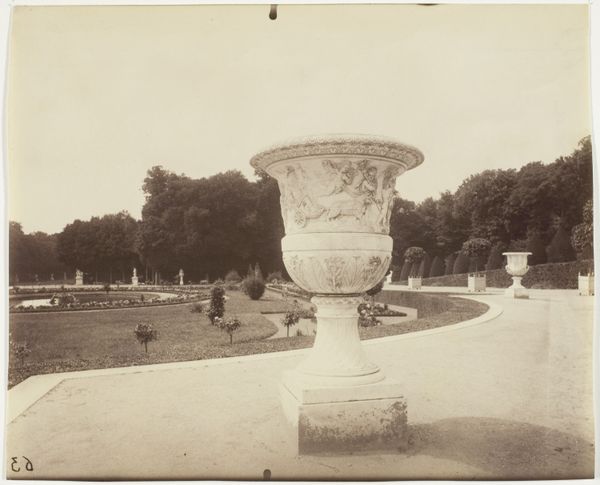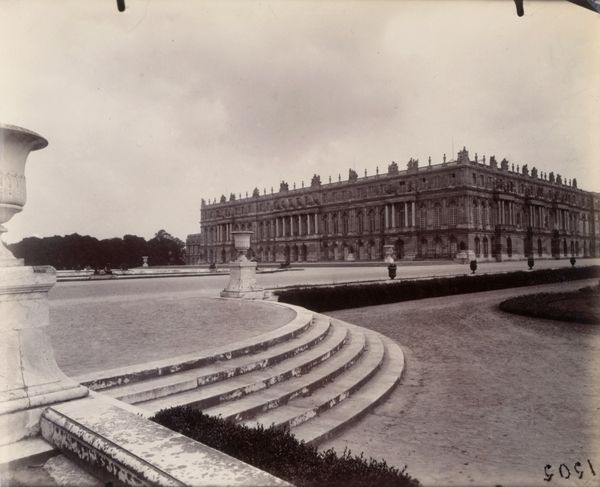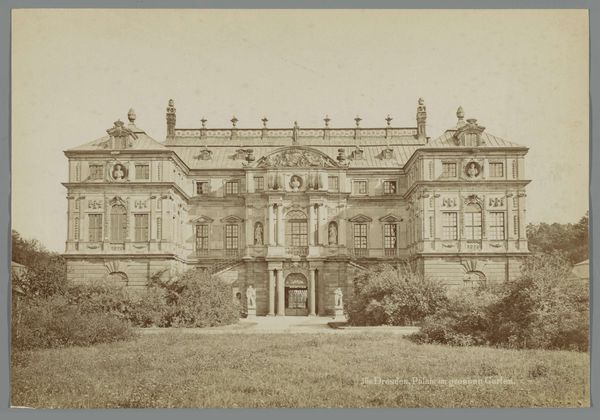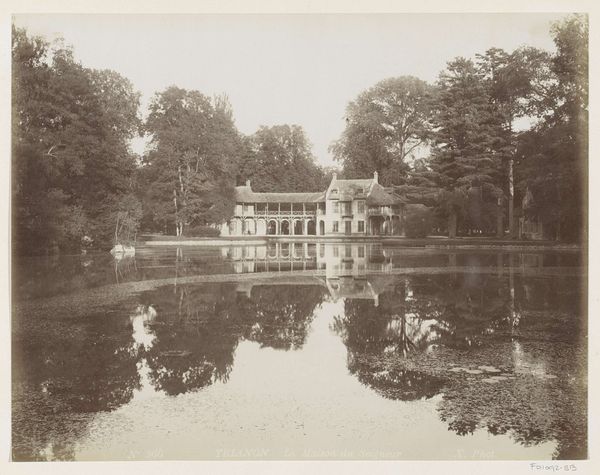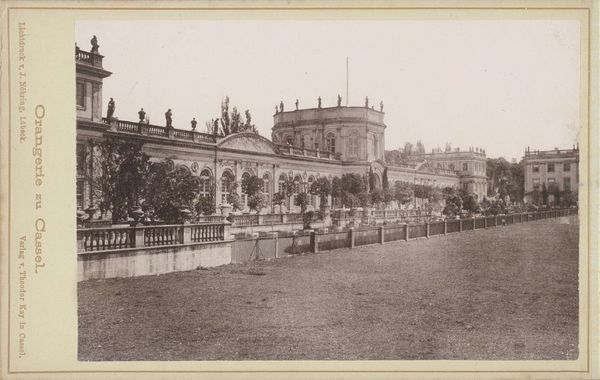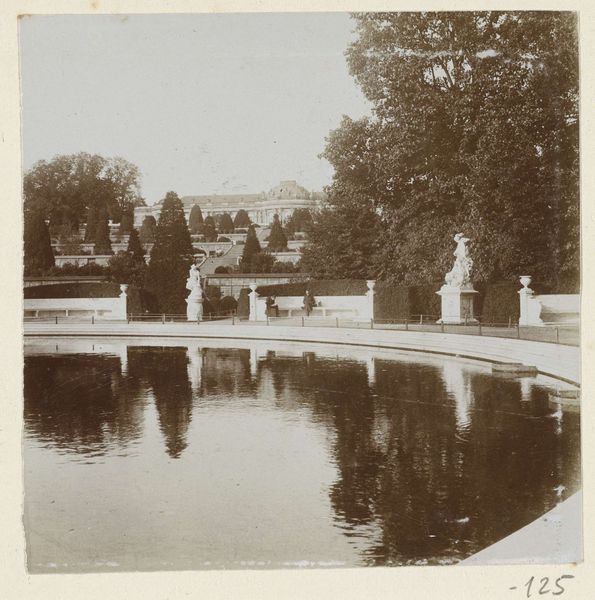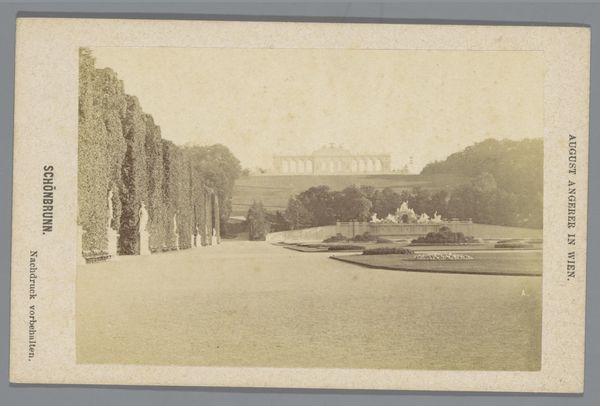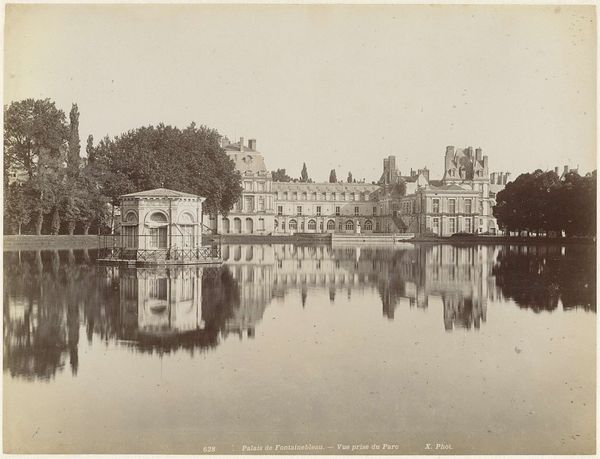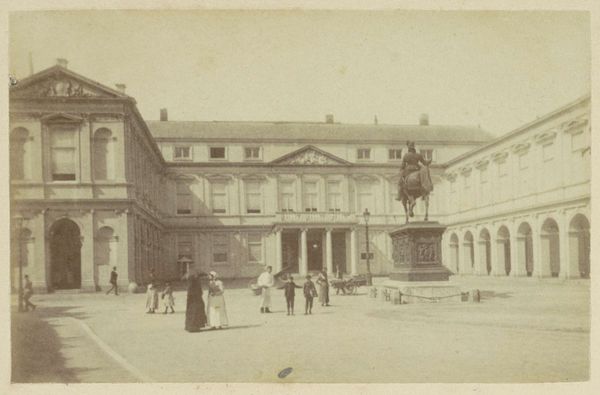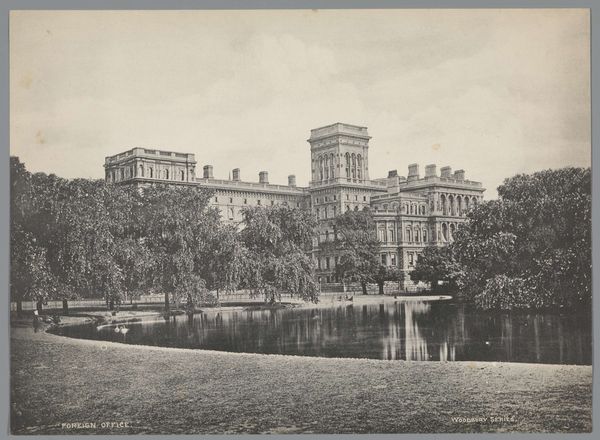
print, photography, albumen-print, architecture
#
print photography
#
neoclassicism
# print
#
landscape
#
photography
#
cityscape
#
albumen-print
#
architecture
Dimensions: height 207 mm, width 277 mm
Copyright: Rijks Museum: Open Domain
Curator: Before us, we have an albumen print dating from around 1880 to 1900, attributed to a photographer known only as "X phot." The subject is the Petit Trianon in the gardens of Versailles. Editor: It evokes such a quiet, contemplative mood, doesn't it? The soft sepia tones, the symmetrical framing—it all speaks to a desire for order and idealized beauty. Curator: Indeed. As an albumen print, it's a direct positive, produced by coating paper with egg white and then exposing it to light through a negative. The level of detail achievable with this method is quite remarkable, and it became commercially widespread in the 1850s. Think about how much labor and skill were required for each individual print, connecting its creator and users into one singular market and context. Editor: Absolutely. This image acts as a powerful statement about the political and social contexts from which it comes. The Petit Trianon, Marie Antoinette’s retreat, became a symbol of royal excess, fueling the French Revolution. A late 19th-century image of this building prompts reflection on France's troubled relationship with its past and evolving national identity as it emerged from decades of political unrest. The formal gardens, in particular, illustrate an imposition of power dynamics. Curator: Very well noted. Beyond the immediate aesthetics, one could consider the economics involved. Photography allowed for broader circulation of images of aristocratic splendor, contributing to new forms of consumption of aristocratic grandeur by a growing middle class and transforming Versailles into a cultural heritage site rather than a seat of royal power. Editor: I also think about the representation of women within this space, given the Trianon’s association with Marie Antoinette. What did it mean for women's roles, visibility, and potential resistance against rigid societal expectations in this carefully staged location? Curator: Good point! Examining how visual materials and material conditions have enabled historical moments of power shifts in gender is crucial. I’m now considering the ways this work complicates distinctions of labour through photography and power as shaped by location and class. Editor: Indeed, it shows how physical spaces have shaped and challenged France’s evolving political and cultural landscape. A deceptively simple image. Curator: A beautiful demonstration of how an examination of material culture can deepen our analysis of art’s impact.
Comments
No comments
Be the first to comment and join the conversation on the ultimate creative platform.
